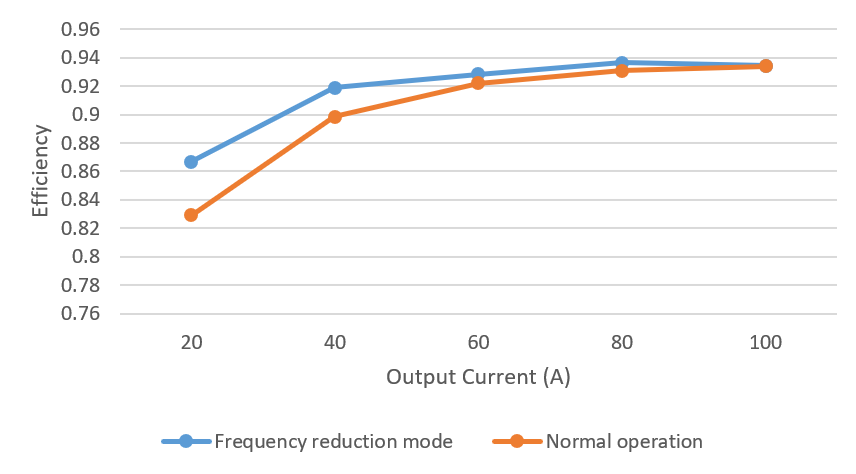TIDT403A August 2024 – December 2024
2.5 Light Load Efficiency Optimization
Considering the converter is working in synchronous rectification status, the light load efficiency is very low. There are two options we can adopt to optimize the load. One option is decreasing the switching frequency and another option is burst mode. Of course, we also can combine the two options into one. As shown in Table 2-9, decreasing the switching frequency at light load contributes to higher efficiency with maximum 4% efficiency promotion.
|
Vin (V) |
Vout (V) |
Load (A) | Switching Frequency (kHz) |
Efficiency Optimized |
Efficiency Before |
|---|---|---|---|---|---|
|
400 |
9 |
20 |
133.7 |
86.67% |
82.92% |
|
400 |
9 |
40 |
133.7 |
91.88% |
89.85% |
|
400 |
9 |
60 |
179.2 |
92.82% |
92.21% |
|
400 |
9 |
80 |
179.2 |
93.63% |
93.09% |
|
400 |
9 |
100 |
200 |
93.43% |
93.38% |
Light load efficiency image is shown in Figure 2-13.
 Figure 2-13 Light Load Efficiency at 400Vin, 9Vout
Figure 2-13 Light Load Efficiency at 400Vin, 9Vout